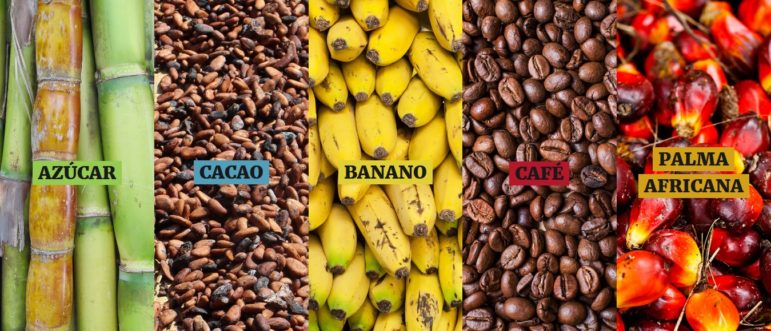

Eight Practices of Successful Entrepreneurial Journalists
 For the last seven years I have been interviewing and profiling successful entrepreneurial journalists in various countries of various socioconomic classes. I’ve talked to publishers and editors with staffs of as many as a hundred as well as some one-man/one-woman bands.
For the last seven years I have been interviewing and profiling successful entrepreneurial journalists in various countries of various socioconomic classes. I’ve talked to publishers and editors with staffs of as many as a hundred as well as some one-man/one-woman bands.
The ones that survive and thrive after several years share some common practices:
1. They develop multiple sources of revenue. They embrace sponsorships rather than advertising, memberships rather than subscription paywalls. They recognize that they can’t make money on standard cost-per-thousand or cost-per-click advertising rates. They seek sponsors who embrace their mission and core values. They monetize their audience by creating clubs or groups of members who support their journalism mission. They can actually charge much more than a subscriber would ever pay.
Among other revenue sources: direct sale of products such as books, music, clothing; creation and management of websites and social media channels for third parties; creation of content for blogs and websites; consulting on digital media; sale of data; foundations; events; crowdfunding; and more (12 revenue sources for digital media organizations).
 2. They build communities around high-quality content. They satisfy a need of their users or help them solve a problem. Eldiario.es of Spain has created a type of club of 10,800 partners who pay 60 euros a year and receive certain benefits, such as access to articles a few hours before non-partners. However, access to the site is free, so what they are really paying for, says founder Ignacio Escolar, is to support high-quality watchdog journalism that is free of political influence. Although these users represent only 2 tenths of 1 percent of the 6 million monthly users, they are enough to provide 570,000 euros and a third of the annual revenues (his financial report to readers, in Spanish). The site has a staff of 40, and growing.
2. They build communities around high-quality content. They satisfy a need of their users or help them solve a problem. Eldiario.es of Spain has created a type of club of 10,800 partners who pay 60 euros a year and receive certain benefits, such as access to articles a few hours before non-partners. However, access to the site is free, so what they are really paying for, says founder Ignacio Escolar, is to support high-quality watchdog journalism that is free of political influence. Although these users represent only 2 tenths of 1 percent of the 6 million monthly users, they are enough to provide 570,000 euros and a third of the annual revenues (his financial report to readers, in Spanish). The site has a staff of 40, and growing.
3. They have a great passion for their idea. Their passion is so great that they can see clearly when their idea is not working and are willing to change tactics and go in a new direction (to pivot, in the jargon of the day).
Leo Prieto, founder of Betazeta in Chile, a platform of specialized sites with 10 million monthly users, saw the movement of the audience to mobile and social platforms and decided more than a year ago to redesign the sites to serve those audiences.
4. They innovate constantly. Juanita León, founder of La Silla Vacía (“The Empty Chair”), an investigative news site in Colombia, has mobilized her small team of five journalists to create data bases of the country’s major players in politics, business, and power. The database of the “superpowerful” includes a map of their connections, by family, education, business, political party, and other organizations. (More on Juanita’s success and philosophy).
5. They develop a three-legged stool of skills. Successful sites have at least one person with skill in the three critical areas: journalism, technology, and sales and marketing. El Confidencial, also in Spain, has survived and thrived for 14 years, more than half of which has been during the country’s deep financial crisis. Today publisher Alberto Artero has a staff of 100. The site is noted for its investigative journalism, especially on the intersection of business and politics. Its innovation unit (profiled by Silvia Cobo, in Spanish) develops projects in all three areas.
6. They promote interaction with the audience. Successful sites take advantage of the two-way communication to develop conversations around the news on various social platforms and on their own comment section. They involve users in choosing topics and providing information. La Silla Vacia is a leader in this area. Their staff responds to every comment on the site.
 7. They obsessively seek differentiation. They understand that they cannot survive by publishing the same information on the same topics as everyone else. So they look for unexplored niches of information. A startup website of a couple of recent university graduates led by Israel Piña, Quién Compró (“Who Bought It”), has carved out a niche by doing investigative stories on the expense reports of Mexico’s members of congress. They discovered, for example, that dozens of senators and members of congress had bought themselves Harley-Davidson motorcycles at public expense.
7. They obsessively seek differentiation. They understand that they cannot survive by publishing the same information on the same topics as everyone else. So they look for unexplored niches of information. A startup website of a couple of recent university graduates led by Israel Piña, Quién Compró (“Who Bought It”), has carved out a niche by doing investigative stories on the expense reports of Mexico’s members of congress. They discovered, for example, that dozens of senators and members of congress had bought themselves Harley-Davidson motorcycles at public expense.
Major news organizations have ignored this rich resource of the public record. Traditional outlets devote their attention to quoting the political class rather than investigating them. Now major newspaper chains have begun to buy stories from Quien Compró. The journalists stumbled on a business model: syndication. (Disclosure: I have been an unpaid adviser to the team.)
8. They tailor their contents differently for each platform. Michael McCutcheon of Mic.com in the U.S. and Santiago Sarceda of Elmeme.me in Argentina obsess about using the right language and headlines to appeal to the different audiences they have on Facebook, Twitter, Instagram, YouTube, and their own website. They do not offer a product that is “one size fits all”. They understand that they have to meet the users on their own turf.
And those who fail….
On the other hand, in this same field of innovation and entrepreneurship in journalism, the characteristics of those who fail are also common:
- they don’t develop a business model from the beginning
- they assume that they can finance their business with traditional revenue sources, mainly advertising
- they tend to reject the idea that they need to market themselves; they assume people will come to them
- they produce the same types of contents in the same formats that they did in traditional media (text with photos, videos, sound) without taking advantage of the strengths of the Internet, namely the linking culture, integrated multimedia reports and interaction with the audience
- they don’t have a commitment to understanding their audience better withmetrics
Good ideas and good intentions are not worth much in the cruel world of Internet competition. Execution is everything, and that requires perseverance and commitment. So the question is, do you have the commitment to overcome failures and setbacks?
This post originally appeared on the blog News Entrepreneurs. It is re-published with the author’s permission.
 James Breiner is a digital media consultant and visiting professor of communication at the University of Navarra in Pamplona, Spain. He is former director of the Global Business Journalism program at China’s Tsinghua University and founding director of the University of Guadalajara’s Center for Digital Journalism. He has spent three decades in the newspaper business, including as publisher, editor, and investigative team leader. @jamesbreiner
James Breiner is a digital media consultant and visiting professor of communication at the University of Navarra in Pamplona, Spain. He is former director of the Global Business Journalism program at China’s Tsinghua University and founding director of the University of Guadalajara’s Center for Digital Journalism. He has spent three decades in the newspaper business, including as publisher, editor, and investigative team leader. @jamesbreiner









